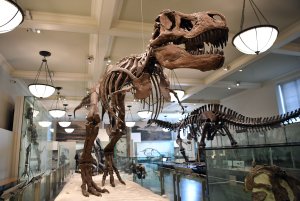Mammals were largely creatures of the night until the dinosaurs were killed off by an asteroid some 66 million years ago, a new study finds.

The findings, described in the journal Nature Ecology & Evolution, illuminate a pivotal transition in the history of Earth’s living things.
Scientists have long wondered whether ancient mammals may have been primarily nocturnal because dinosaurs dominated daytime activities — an idea known as the “nocturnal bottleneck hypothesis.”
Living mammal species today carry many signs of a literal dark past. For example, most mammals (except humans and many other primates) don’t have a fovea, an area in the eye’s retina that allows for the clearest vision. The shape of many mammals’ eyes also favors low-light sensitivity rather than the ability to see sharply.
Read the full story on LATimes.com.















